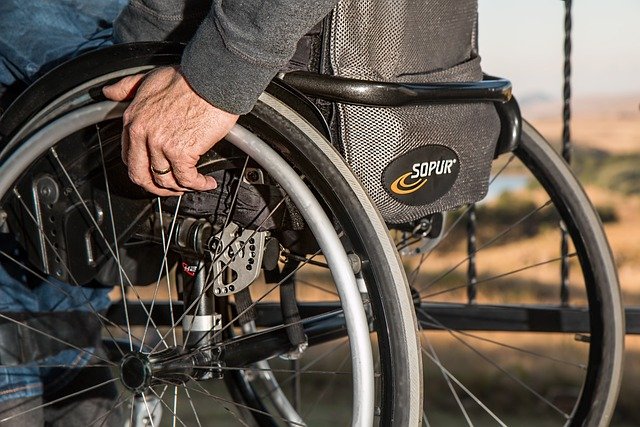Lightweight Auto-Folding Mobility Scooter: Practical Guide to Selection, Use and Care
Auto-folding mobility scooters represent a significant advancement in personal transportation technology, offering unprecedented convenience for users who need reliable mobility assistance. These innovative devices combine lightweight construction with automated folding mechanisms, making them ideal for travel, storage, and daily use. Understanding their features, capabilities, and maintenance requirements helps ensure you make an informed decision when selecting the right model for your specific needs and lifestyle requirements.

Lightweight auto-folding mobility scooters have revolutionized personal transportation for individuals with mobility challenges. These sophisticated devices offer the perfect balance between functionality and convenience, featuring automated folding systems that eliminate the physical strain of manual folding while maintaining portability and ease of use.
Key Features and Technical Specifications
Modern auto-folding mobility scooters incorporate several essential technical elements that define their performance and usability. Weight capacity typically ranges from 220 to 300 pounds, while the scooters themselves weigh between 40 to 65 pounds when fully assembled. Battery systems usually feature lithium-ion technology, providing 8 to 15 miles of range per charge depending on terrain and user weight.
Motor specifications generally include 250 to 500-watt systems, enabling speeds of 3 to 6 mph on level surfaces. The folding mechanism operates through electric actuators or hydraulic systems, completing the transformation from riding position to compact storage mode in 15 to 30 seconds. Wheel configurations commonly feature three or four-wheel designs, with pneumatic or solid tires measuring 8 to 10 inches in diameter.
Benefits, Limitations and Real-World Performance
Auto-folding scooters excel in situations requiring frequent transportation and storage transitions. Their primary advantage lies in eliminating the physical effort needed for manual folding, making them accessible to users with limited upper body strength or dexterity. The compact folded dimensions allow easy storage in car trunks, closets, or under airline seats in many cases.
However, these devices have notable limitations. The automated folding mechanisms add complexity and potential maintenance requirements compared to manual alternatives. Battery life affects both riding range and folding operation capability. Weight restrictions may limit their suitability for heavier users, and the sophisticated electronics can be sensitive to moisture and extreme temperatures.
Real-world performance varies significantly based on usage patterns, terrain, and maintenance practices. Users report satisfaction with indoor navigation and smooth outdoor surfaces, though performance may decline on uneven terrain or steep inclines.
Safe Folding, Unfolding and Transport Procedures
Proper operation of auto-folding mechanisms requires adherence to specific safety protocols. Before initiating folding sequences, ensure the scooter is on level ground and the battery has sufficient charge. Remove any accessories or personal items that might interfere with the folding process. Engage the parking brake and turn off the main power before activating folding controls.
During unfolding, allow the mechanism to complete its cycle fully before attempting to use the scooter. Check that all locking mechanisms have properly engaged and test steering and throttle responsiveness before riding. When transporting folded scooters, secure them properly using tie-downs or storage straps to prevent movement during transit.
Always consult the manufacturer’s specific instructions, as folding procedures vary between models and brands. Some units require manual assistance during certain phases of the folding process, while others operate completely automatically.
Battery Care, Charging and Routine Maintenance
Battery maintenance significantly impacts both performance and longevity of auto-folding mobility scooters. Lithium-ion batteries perform optimally when maintained between 20% and 80% charge levels. Avoid complete discharge cycles, which can reduce battery lifespan. Store scooters in temperature-controlled environments when possible, as extreme heat or cold affects battery performance.
Charging procedures should follow manufacturer specifications regarding timing and frequency. Most units require 4 to 8 hours for complete charging cycles. Use only approved chargers to prevent damage to battery management systems.
Routine maintenance includes regular cleaning of electrical contacts, inspection of folding mechanism components, and tire pressure checks. Lubricate moving parts according to maintenance schedules, typically every 3 to 6 months depending on usage frequency. Professional servicing may be required annually or after specific mileage intervals.
Buying Considerations, Accessories and Compatibility
Selecting the appropriate auto-folding mobility scooter requires careful evaluation of individual needs and circumstances. Consider weight capacity requirements, intended usage environments, and storage constraints. Evaluate folding dimensions against available storage spaces and transportation methods.
Battery range should align with typical travel distances, accounting for terrain variations and weather conditions that may affect performance. Warranty coverage and local service availability are crucial factors, particularly given the sophisticated electronic systems involved.
| Model Type | Provider | Weight Capacity | Folded Dimensions | Price Range |
|---|---|---|---|---|
| Compact Travel | Enhance Mobility | 250 lbs | 25” x 13” x 16” | $2,000-$3,000 |
| Standard Auto-Fold | Pride Mobility | 300 lbs | 29” x 16” x 18” | $2,500-$3,500 |
| Heavy-Duty Folding | Drive Medical | 325 lbs | 32” x 18” x 20” | $3,000-$4,000 |
| Ultra-Portable | Solax Mobility | 265 lbs | 23” x 14” x 15” | $2,200-$3,200 |
Prices, rates, or cost estimates mentioned in this article are based on the latest available information but may change over time. Independent research is advised before making financial decisions.
Accessory compatibility varies between manufacturers and models. Common additions include storage baskets, cup holders, weather protection covers, and upgraded seating options. Verify compatibility before purchasing accessories to ensure proper fit and function.
Auto-folding mobility scooters represent a significant investment in personal independence and mobility. Proper selection, maintenance, and operation ensure these devices provide reliable service and enhanced quality of life for users requiring mobility assistance.




